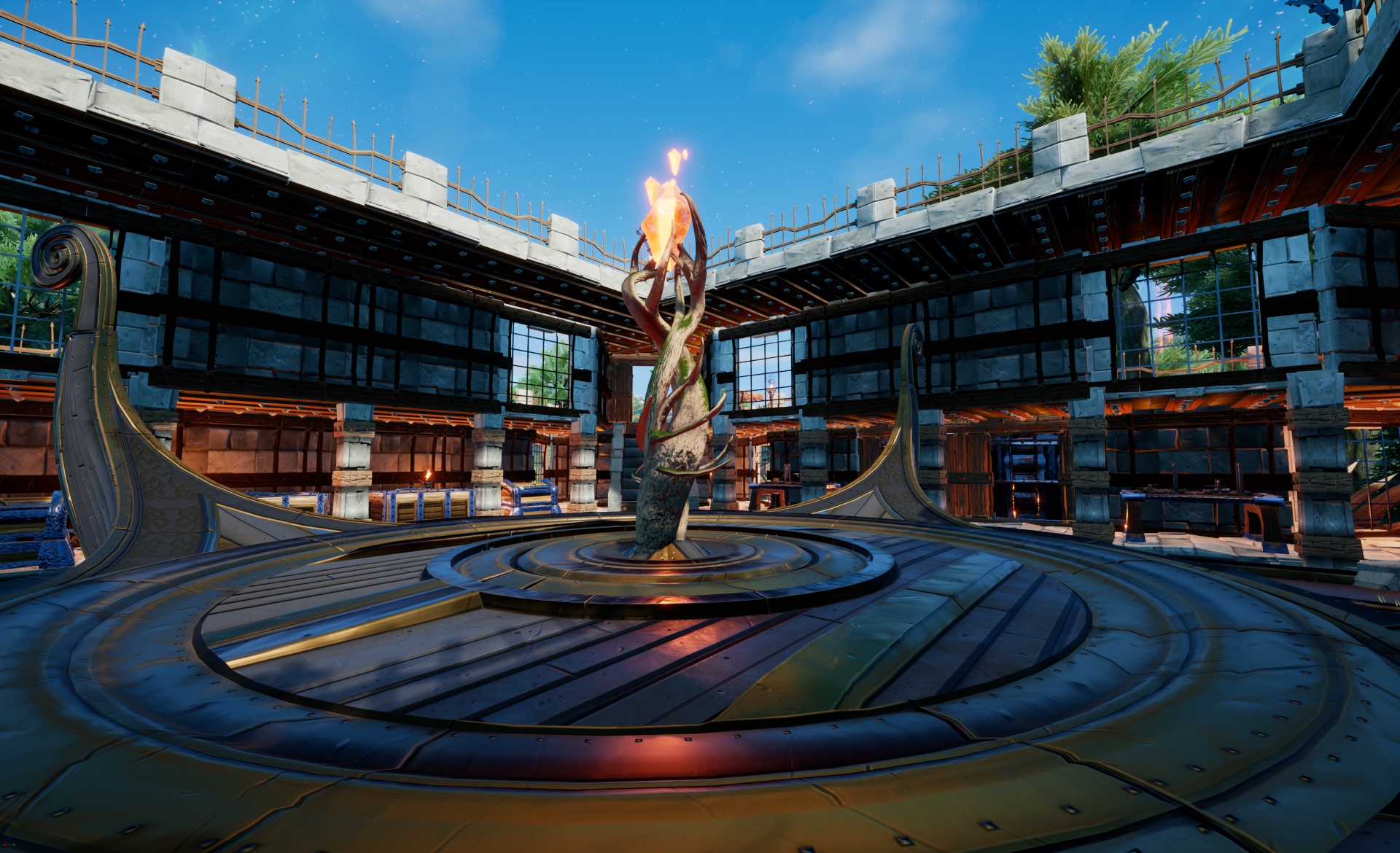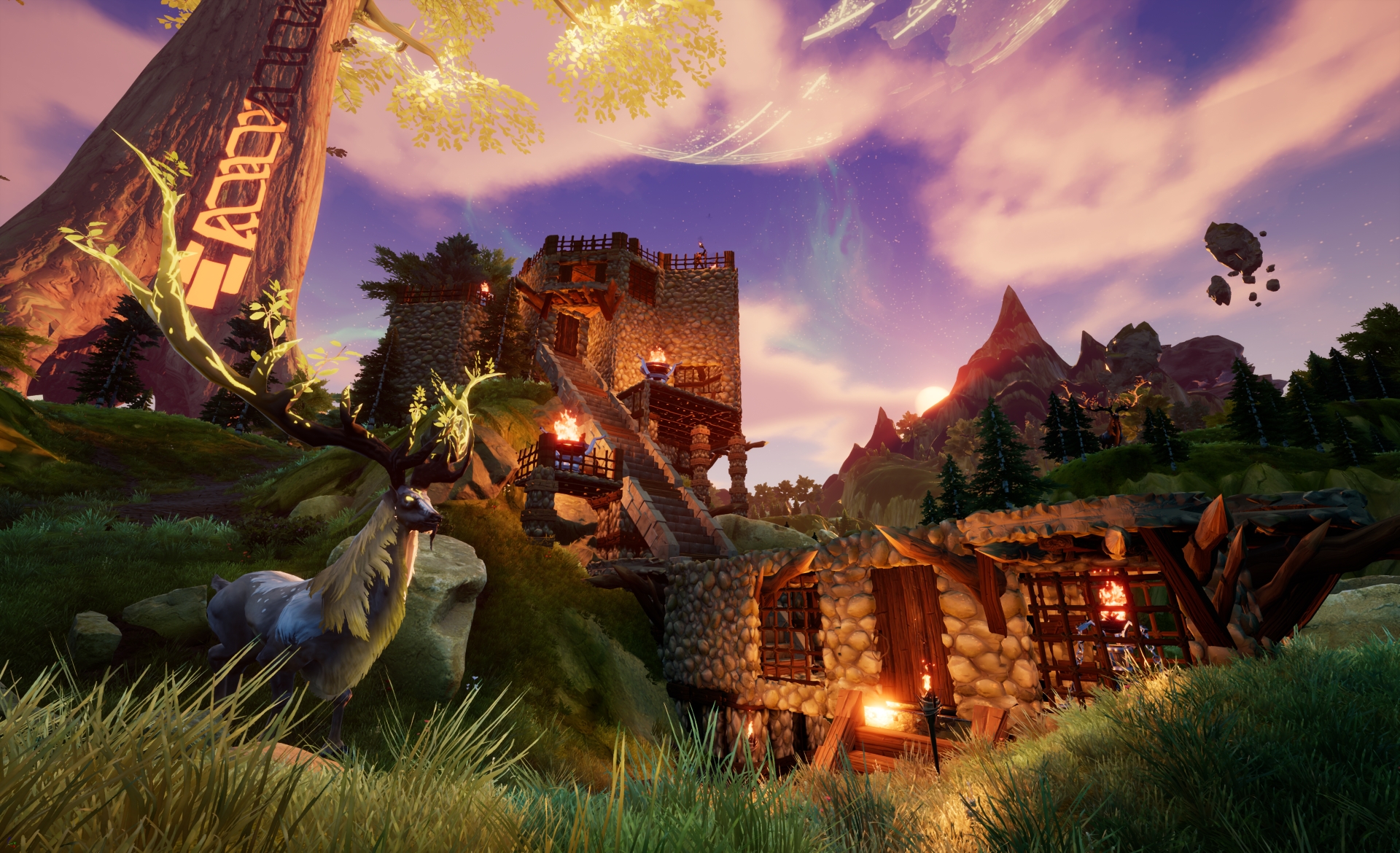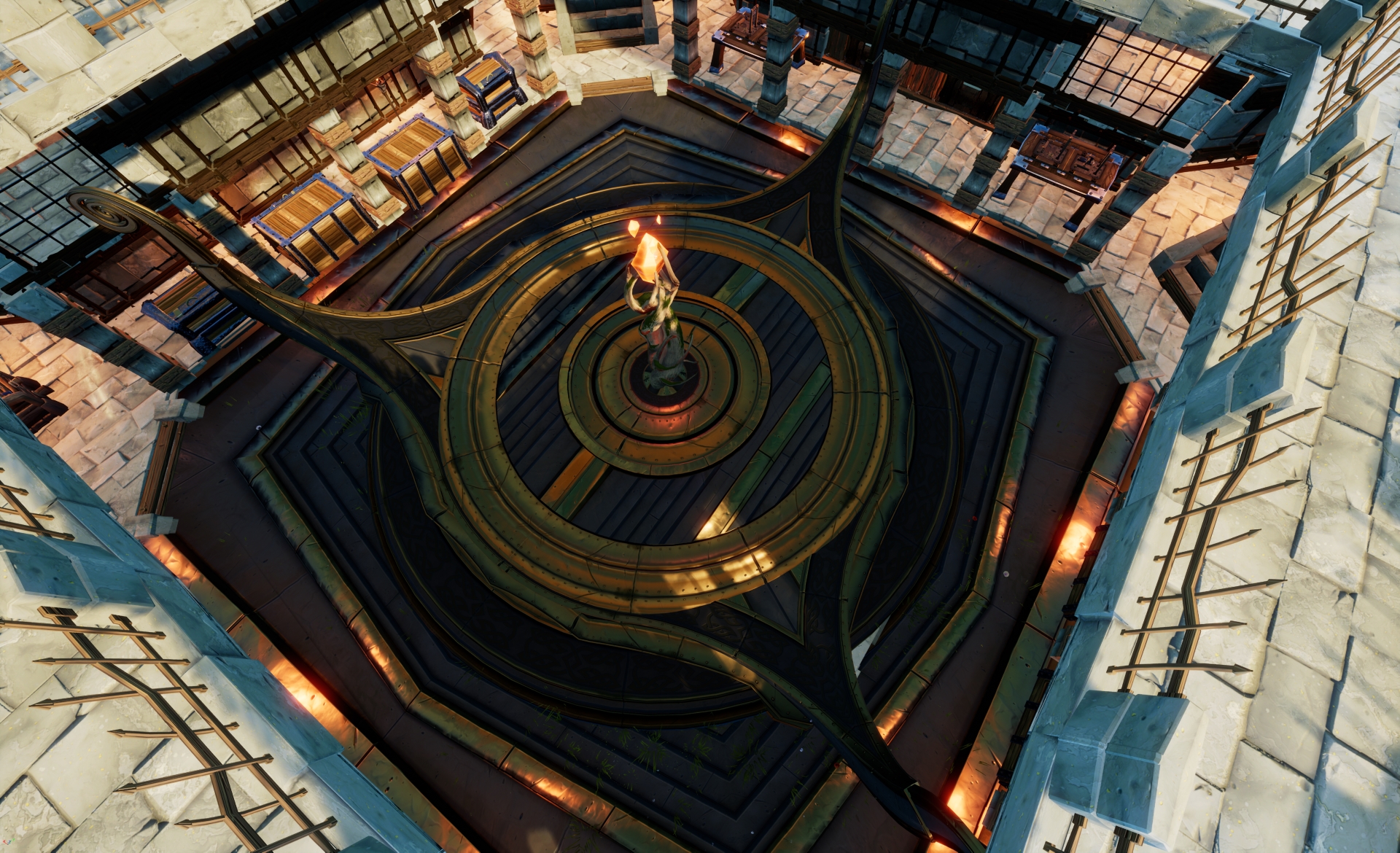By Jaime Skelton (MissyS), Editor-in-Chief
Multiplayer survival games have been growing in popularity in the past few years. From ARK to DayZ, gamers have a love for games with competitiveness, customization, and a sense of risk versus reward. But as the market grows more saturated with survival games, it is becoming more difficult for developers to make their title shine apart from the rest. But after meeting with Jeremy Wood (co-founder) and Jordan Leithart (developer) of Frostkeep Studios at PAX West, I have a good feeling that the studio’s upcoming survival title, Rend, has what it takes to offer a fresh experience.
From the start, Frostkeep Studios made it clear that they wanted to address some of the pain felt in survival games. They cited elements like losing progress while offline to a player raid on a personal base, or joining a server to find a highly powered guild that has its sights set on conquering without mercy. The solution to this problem that Rend offers is faction based survival. On character creation, players can choose one of three factions. A new player will login to find themselves in a community with a shared communal base with community resources, shared goals, and shared enemies.
Faction bases are protected by a magical shield that cannot be destroyed. Instead, the shields of all three faction bases drop on a pre-determined schedule that’s visible on server select. This time is called “The Reckoning.” During the Reckoning, all shields come down for a few hours, and players can attack their enemy’s bases – but must also contend with The Lost Ones, a hoard of PvE enemies. This scheduled event reduces the overnight attacks, and encourages players to a server-wide event that can result in a true siege war. While testers loved this system, Frostkeep found that they wanted even more war, skirmishes that could happen at any time between these larger-scale battles. Testers also found that the community bases were sometimes skewed, with only a couple of people building and contributing while the rest benefited from their work.
Faced with this feedback, and knowing that it would take longer to change the game to suit this player feedback, Frostkeep took the risk and decided to head even deeper into development to offer an even more polished experience. They shut down the Rend alpha, doubled their employees, and sought outsourcers to build new assets for the game.
The first solution was to add personal bases into the world – with caveats. As the team explains, it’s less fun for the person being raided – especially when they’re not there. So Frostkeep’s design philosophy is “non zero-sum raiding,” in which the raider still makes worthwhile gains, but the raidee loses less in the process. They are also introducing customization through personal advancement crafting. Previously, all research was done through the faction. Each player can advance their own crafting trees by making items. This makes them more skilled at making items and opens up new branches of better items to research and make.
How do these two things tie together? Well, instead of simply attacking a base and raiding for supplies, players can raid bases for research knowledge. By accessing a player’s crafting station, you can steal research from them and take it directly back to your own to learn it yourself. Jeremy explains that this actually offers an incentive to not destroy another player’s base – after all, doing so means they have to spend more time rebuilding, and less time researching. A stealth mission will ensure that the enemy never knows you were there, and lets you return to steal more research in the future. There’s also the fact that it takes a lot of heavy structural damage through expensive crafting like bombs – meaning that resources to attack structures are better suited for faction-held structures rather than personal player bases.
In addition to player bases, Rend has also introduced control points. These begin as small shrines which any faction can claim and then build around. While controlling it, the faction is also given a special bonus (which varies per control point). Of course, opposing factions can move in and attack and claim these control points at any time – and they gain not only control of the shrine, but anything left still standing around it. Thus it pays to avoid mass destruction, and focus on doing as little structural damage as possible. These control points will also come under attack from the Lost Ones during the Reckoning, meaning that stronger factions are more spread out in their defenses if they want to hold everything they own.
The end balance goal, then, is that players who are behind can gain from attacking players who are ahead, while players who are ahead have nothing to gain from attacking those who are behind. This leads to a better hierarchy of power on the server, where weaker players will attack stronger player to gain power, and stronger players will attack faction enemies for power. Meanwhile, faction power as a whole should shift more regularly, as player limits force factions to consider their holdings tactfully each week. All of this should come together as a prevention against power snowballing, in which the strong only grow stronger and the weaker have no chance to gain.
Rend’s server structure (which supports 20 people per faction) and lifespan is also different than most survival games. Each faction has a “scoreboard” called the Divinity Stone – visible in-game as a large tree with runes running up its trunk – and the goal is to fill this meter with as many souls as possible. The first to fully fill their meter will win, putting the server into a temporary grace period before it fully resets. Each player will be granted meta progression points at this time, based on their personal participation in the server’s events as a whole and contribution to the faction, with an additional small bonus for the winning faction. This means that players who don’t contribute much to their faction will see little rewards, win or lose. These points can be used for various situational and head-start abilities, cosmetics, and potentially even new classes.
The game will feature plenty of progression depth within its sandbox structure, too – creating depth of progression through hunting down rarer materials, for example. One of these areas is the caves, which features dangerous environments, deadly creatures, and the threat caused by funneling all three factions into a central area. The caves are also incredibly dark – a darkness that can’t be solved with gamma adjustments – meaning that choosing to use a light is a tactical decision that may give away your position to the enemies. Noise, too, is important – armor and talents may determine how much noise you make, which in turn gives away your position to player and AI enemies.
The deepest area of the game is the Eternal Wastes, a place of constant freezing darkness designed for prepared groups. This is where the best resources of the game are found, but it is also where tombs are found. Each tomb is locked, and requires an expensive crafted key to open. Within these tombs are boss encounters. Groups who defeat these bosses can loot the tomb to gain ridiculously overpowered legendary items, including server-unique artifact items. Frostkeep notes that these items won’t be able to be gathered until the server’s progressed far enough that it is near the end of its cycle, which is when the gloves come off with balance and it becomes a fun rush to push to the last goal. These items are also lootable from dead players, which means that they will be hotly contested and in demand while they last. There will also be measures in place to prevent players from logging out with these items and not logging back into again or other measures of griefing.
Rend is shaping up to be an exciting new competitive survival experience. Early Access on Steam is coming soon, so make sure to add it to your wishlist and keep an eye out for future news.







